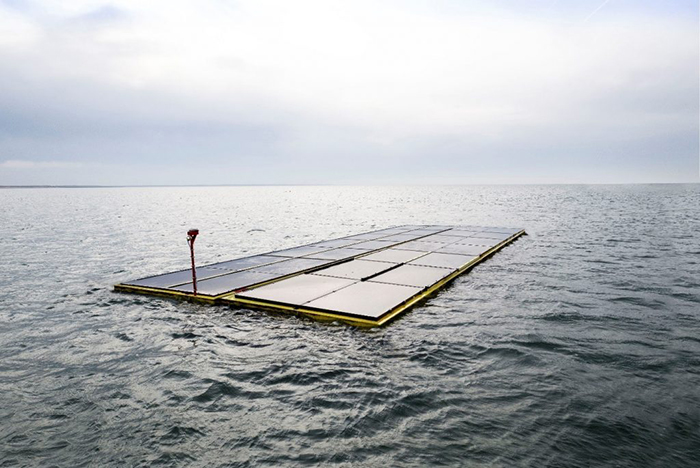Offshore solar farms: a new trend that’s tough on cables and connectors
The world is now familiar with the concept of solar energy; an array of photovoltaic solar panels that turn the sun’s rays into electrical energy for personal and commercial use. Since 2007, solar farms began to migrate from land to the surface of water supply reservoirs such as dams and lakes. The benefits of floating photovoltaic (FPV) are numerous, including freeing up valuable or arable space on land, and reducing evaporation from water reservoirs, and now there is a growing trend towards offshore solar farms.
As renewable energy technology matures and costs reduce, many countries are rushing to install FPV farms in the sea. Both offshore and near-shore marine FPV hold immense potential for islands and other land-scarce countries which may have excellent weather conditions for the generation of solar power but lack available land surfaces for traditional ground-mounted solar farms. The deployment of marine FPV may be of particular interest to highly populated coastal cities. Marine FPV also offers other advantages, such as providing shelter for juvenile fish populations and potential aquaculture opportunities for items such as seaweed and mussels which can grow abundantly beneath the floats.
Offshore solar is still at a nascent stage and uncertainties about long-term reliability and long-term maintenance cost remain. The end of 2019 saw the successful installation and field testing of an open-sea FPV installation in the rough North Sea off the Dutch coast, a landmark success in the development of FPV. It is expected that in 2020 renewable energy companies all over the world will race to install utility-grade solar farms in marine environments, both offshore and near-shore.
However, the marine environment poses some significant challenges for solar farms. Large waves and high winds pose potential threats to the installation, while mooring and anchoring become much more difficult in the face of strong currents and significant tidal displacements. In addition, high levels of salinity and the accumulation of marine organisms can damage equipment and affect the functionality of the installation.

The harsh environment for marine FPV therefore means that the individual components that make up the system, particularly the electrical components, must be high-quality marine grade to ensure long-term reliability. In particular, cables and connectors for power, signal and data must be able to withstand high levels of salinity and the possibility that they may be underwater for long periods of time. The highest possible IP ratings on these products are absolutely essential to ensure that there is no risk of water ingress, which could lead to total system failure and incur high maintenance and repair costs.
Bulgin, a manufacturer of rugged connectors and components, offers a range of IP66, IP67, IP68 and IP69K rated environmentally sealed circular connectors and cables especially designed for marine applications. The range includes a high-pressure underwater tether connector, micro, mini and standard USB connectors, SMB antenna connectors, Ethernet connectors as well as a variety of power connectors to suit all power supply requirements.
Each series in Bulgin’s well-known Buccaneer range has a flex cable connector, in-line flex cable connector and bulkhead panel mounting options, and overmoulded cable versions are also available for selected series. With a wide choice of ruggedised plugs and receptacles offering 2 to 32 poles, popular power ratings including 250V, 277V up to 600V 32A and screw, solder or crimp terminations and metal or plastic connector housings, Bulgin offers well suited interconnect solutions to the specific design challenges posed by marine solar farms.
Download the Bulgin marine brochure to see the full selection of marine-grade power and data connectors and cabling for marine solar farms. Click the button at the top of the page.





